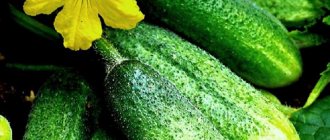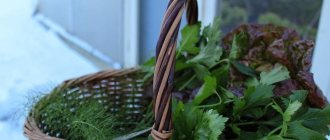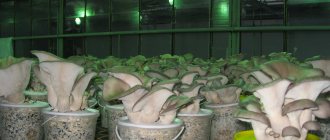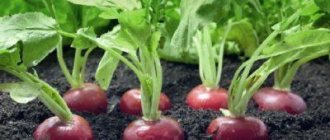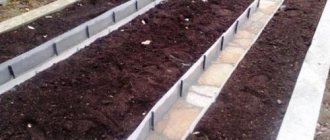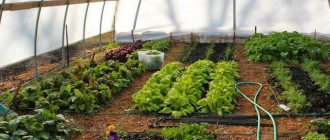The herb grown for its greens is called cilantro. If the plant is planted for the purpose of obtaining seeds, it will be called coriander. Cilantro feels great in a greenhouse, on a garden bed and on a windowsill. In greenhouses, the spice can be cultivated separately or as an intermediate plant, planted between the rows of other crops. Growing cilantro in a greenhouse is possible with the organization of a competent heating system, additional lighting, and irrigation system. It is advisable to use racks on which containers or pots are installed.
Cilantro is a green mass, coriander is the fruit of the same plant.
Advantages of a greenhouse
Cilantro is considered a very delicate plant. It is often found in dishes, since the spice is used everywhere in cooking. The addition of this greenery perfectly emphasizes the taste of fish and meat. It is also added to sauces and soups.
Most often, the spice is grown specifically for the purpose of obtaining the greenery of the plant, but they also do not forget about coriander. The plant grows well in open ground, but also produces a rich harvest in greenhouse conditions.
This method of growing spices has the following advantages:
- If the greenhouse is heated, then you can harvest even in winter.
- Growing cilantro in a greenhouse prevents pests from damaging the greenery.
- It is possible to provide the required level of humidity on a closed plot of land.
- Reduced growing season. Fresh greens are harvested 2 weeks after sowing the seeds.
- When planting, cilantro can be combined with other vegetable crops by planting plants between rows.
- Growing plants in a greenhouse produces cilantro and coriander seeds.
Harvesting cilantro
Cilantro is a spice actively used in cooking as a seasoning for first courses and sauces. Pairs harmoniously with meat and fish.
The commercial height of green mass is considered to be 10–20 cm. Later cutting is fraught with the onset of flowering and coarsening of the leaves. You can determine the harvest date by the rich green color of the herbs. Cilantro cut early in the morning is washed with running water, dry stems, leaves, debris, and insects are removed, dried with paper towels and tied into bunches. You need to hang herbs in the attic or other dry room, where direct sunlight, which destroys vitamins and nutrients, does not reach.
Proper drying of cilantro preserves minerals and vitamins, as well as taste and aroma. Completely dried plants are crushed and placed in glass jars with hermetically sealed lids.
Cilantro grown in a greenhouse can serve as a good financial boost. Young greens are readily sold out. You can sell the seasoning yourself or through shops and vegetable stalls. The size of the harvest, and therefore the profit, largely depends on the area of the greenhouse.
Seed selection
Gardeners have access to a large number of different varieties of cilantro, the most popular of which are presented below:
- Amber. It is a fragrant plant that can increase leaf formation with good, consistent watering. Late formation of seeds allows you to harvest greens for a long time. Leaves are cut at a height of 10 centimeters.
- A variety such as Venus is considered early, since the leaves are collected within a month after emergence. The variety has a unique smell, and also stands out among others with a more raised rosette.
- Caribe is considered a hybrid species. This plant is resistant to temperature changes and is characterized by a late appearance of arrows. Caribe is considered an annual plant.
- Borodino variety cilantro has delicate leaves and has an average growing season. Greens give a pleasant aroma and good taste.
- The mid-late variety Stimul has a compact rosette, which is about 30 centimeters in height. The weight of one plant reaches 45 grams. The greens are dark green in color.
- Alekseevsky 190 variety of cilantro does not fall off and is also resistant to frost. It is rarely attacked by pests.
See also
How to properly preserve cilantro for the winter and can it be frozen?
Read
Sowing
To grow cilantro on a windowsill, you need to plant the seeds correctly. To do this, you must fulfill a number of requirements.
How to plant cilantro in a pot:
- The bottom of the container must be filled with drainage.
- Next, fill with nutritious soil, leaving 3 cm from the top.
- Lay out 10 whole cilantro seeds or 20 separate ones (depending on the width and length of the container, the number of coriander seeds varies). One round seed produces 2 plants.
- Cover with soil, layer thickness 1-1.5 cm.
- Moisten the soil; it is recommended to use a spray bottle.
- The pots are placed in a warm, dark place, covered with polyethylene or glass.
- Until sprouts appear, cilantro maintains soil moisture.
- Coriander seeds take 7-10 days to germinate.
If you soak cilantro seeds for 1-2 hours before planting, they will sprout faster. As soon as the shoots appear, the pot is placed on a lighted windowsill and the polyethylene is removed.
Growing
Rules for growing cilantro at home:
- The first step is to prepare the landing site. This will require a large container.
- Coriander is planted at intervals of 7 centimeters. You should also observe the depth of placing the seeds in the soil (2 centimeters).
- The container with the planted seeds will need to be wrapped in plastic or covered with film on top. This action will help to obtain a greenhouse effect, which will provide good prerequisites for the emergence of seedlings.
- For coriander to germinate, it needs good lighting. Therefore, you will need to place a fluorescent lamp nearby.
- The film is removed after sprouts with cotyledon leaves appear. After 20 days, cilantro is ready to eat.
Coriander seeds can also be planted in pots. If the pots are small, then 1-2 grains will fit in them. The large size of the grains allows you to plant coriander without any difficulties.
You can also plant coriander seeds in a greenhouse. This option involves sowing at the end of winter. In this case, seedlings will appear within half a month.
Sprouts begin to appear after a month and a half. The period may be reduced to a month if planting began closer to summer. This method of growing cilantro takes a little longer than using a greenhouse.
Greenhouse growing of greens has the following features:
- seeds are planted with a distance of 8-12 centimeters between them;
- A distance of 30-35 centimeters should be left between the rows.
What do you need for business?
You may be interested in:
To start a business growing cilantro in a greenhouse in winter, draw up a business plan. It consists of several important points:
- Grade. Analyze whether such a business will really be profitable in the region, and where it will be possible to sell the products.
- Knowledge. Study information about the features of growing cilantro in the region where production is planned, the features of caring for it, collecting and storing it.
- Search for clients. To prevent the business from becoming unprofitable, find potential buyers and negotiate the terms of the deal with them.
The advantages of such a business include the constant demand for greens, its rapid growth and ease of care. But there are also disadvantages. For example, in the cold season, a high-quality greenhouse with a heating system is required, so you will have to spend a lot of money. But, if the demand is high, the costs will quickly pay off.
On a note!
The shelf life of cilantro after cutting is only 2 days. Therefore, take care of delivering the goods to the client as quickly as possible in order to provide a high-quality product.
The most unprofitable business is selling greens to resellers; you won’t earn much from this. If you are planning mass production, then agree on the sale of products with representatives of cafes, restaurants and shops. But, for this, prepare documents for the greens and draw up an agreement.
Counting expenses
It is profitable to grow cilantro in the southern regions of the country, where winters are not frosty and daylight hours are long. The largest expense will be required to purchase a greenhouse. The cost of a reliable shelter with a heating system can range from 200 to 500 thousand rubles, depending on the size and additional functions. To start a business you will also need to purchase:
- boxes for seedlings;
- soil and fertilizing;
- seeds;
- inventory and equipment for ease of work.
To create a business, you may need to purchase land or hire a hired worker to care for the plant. If the business is official, then additional funds will be required for its registration and annual payment of taxes. Large costs will be needed for electricity, they can range from 75 to 90 thousand per year. Opening a business will require more than a million rubles, taking into account its registration, so it is reasonable to open it only if its profitability exceeds 20% annually.
Income calculation
On the market, a kilogram of fresh coriander or cilantro costs from 50 to 70 rubles. Accordingly, income directly depends on the amount of greens grown. To determine it, do a few simple arithmetic operations:
- About 2 kilograms of greenery comes out of a square meter of land. 60 squares will yield 120 kilograms.
- All that remains is to multiply this amount by 50 rubles for the wholesale sale of cilantro, you get 6,000 rubles per month.
The annual income from the sale of cilantro from a greenhouse with an area of 60 square meters will be 72 thousand rubles. The more greenery is planted, the higher this amount will be. If you grow cilantro with other types of greens and constantly supply it to stores, markets, restaurants and cafes, you can make a good profit.
Soil preparation
Cilantro grows well in slightly acidic soil. To prepare the greenhouse for planting, you should remove the top layer of soil and mix it with peat fertilizer. Sand is also sometimes added. A solution of copper sulfate will help disinfect the soil. The substance allows you to get rid of harmful larvae. Afterwards, manure is added to the soil, but it must be rotted. A similar mixture is laid out in the beds.
To increase productivity, you should change the soil in the greenhouse every year. Mineral complexes based on potassium and superphosphate are also considered fertilizers. A replacement is wood ash or humus. Fertilizer is used before planting. To do this, you need to thoroughly loosen the soil.
See also
How to grow coriander (cilantro) from seeds in winter on a windowsill in an apartment at home
Read
In order for the harvest to be good, the fertilization procedure should be carried out after each harvest of greens. Fertilizing is combined with watering the plants. Weeds are also removed and the soil is loosened.
Caring for greenhouse dill
It is necessary to care for the plant in the same way as in open ground. Fulfilling simple requirements will help you grow a rich harvest. Summer residents who decide to plant dill in a greenhouse should remember that breeders are developing new varieties that are resistant to diseases and non-standard growing conditions. Therefore, sometimes it is enough to choose the right types of crops, and the harvest will definitely please you.
Temperature
Dill is cold-resistant, but loves warmth. The temperature in the greenhouse should be at least +15...+18 ⁰С, drafts should not be allowed. Optimal temperature will help the plant develop correctly and proportionately.
Light mode
Dill needs lighting so that the stems do not stretch, but develop normally. Approximate time is 12 hours; in winter, when there is a lack of natural light, greenhouses are equipped with phytolamps. The lower shelves are especially carefully illuminated.
Watering
Dill requires constant soil moisture, but there is no need to flood it. Immediately after sowing, the paths are watered with a sprayer. This way there is a greater chance that the seeds will not be washed away.
After the dill has risen, watering is carried out once every 5-7 days, after the soil has partially dried. It is advisable to use warm water.
Fertilizers
It is necessary to feed as it grows. But they begin even at sowing, adding humus, urea and other mineral fertilizers to the soil.
1-2 times during the growing season they are fed with the following composition:
- 20-25 g urea;
- 15-20 g of potassium salt;
- 10 liters of water.
After watering with the solution, it is necessary to moisten the root with warm water.
If the color of the greenery changes to yellow-green, you should fertilize it with fertilizers containing nitrogen. Approximate composition: 15-20 g of fertilizer per 10 liters of water.
If the color of the greens is deep green, you should not get carried away with fertilizing. Dill accumulates nitrates in the green mass.
Thinning
When the plants are 10 cm in height, they begin to thin out. Strong specimens are pulled out, dried or transplanted to a new location. Meanwhile, the oppressed shoots gain strength and begin to grow normally. Or every second sprout is removed to ensure freedom of development for the remaining ones.
Weeding
Removing weeds is necessary in the initial stages, until the dill begins to grow intensively. Weeds pull a lot of nutrients from the soil, which does not allow greenery to develop normally. Their timely removal will help the plant to grow fully and produce a good harvest.
The best recipes for preparing dill for the winter, which one is best for preservation, how to preserve the aromaRead
Loosening
Supplying the root system of greenery with oxygen is achieved by loosening
This must be done carefully so as not to damage the roots of the plants. This will also help retain moisture in the soil.
Watering
Cilantro is considered a not too demanding plant. The main conditions for a good harvest remain proper soil care and sufficient watering of plants. Automatic drip irrigation will ensure the recommended soil moisture. To simplify the organization of watering, watering cans with a wide spray pattern are used.
Plants should be watered twice a week. Water at room temperature is suitable for this. If the water is too cold, it will slow down the growth of the greens. Cilantro should be watered intensively only when growing green mass.
How it all began
As I said, 10 years ago I lost my job. For many years she worked as a nurse at a local hospital, but was laid off and was never able to get a new job. This is not surprising, because there is only one clinic in our village, and it was very expensive to travel to a different locality each time. Of course, against this background, I was very worried, because being unemployed was not part of my plans: my husband and I at that time had 2 loans and a lot of debts (we borrowed money to build a house).
At the family council, we decided that we would be involved in the breeding and sale of broilers, as well as the cultivation and sale of greens. I knew well how to properly care for poultry, and I also had extensive experience in gardening, so without thinking twice we got down to business.
Cilantro grows very quickly in a greenhouse.
Growing cilantro
Cilantro is the most popular herb in Dagestan. It is added to various dishes, from simple soup to barbecue. In our village, finding good cilantro is not so easy: they mainly sell imported greens, which have a good presentation, but terrible taste. But buying homemade cilantro grown without using huge amounts of fertilizer is a huge problem.
In general, coriander is an unpretentious crop that does not require careful care. And this is its main advantage. The rules for sowing cilantro are quite simple: the seeds do not need to be pre-soaked; they are placed in the soil to a depth of 1 to 1.5 cm. An important nuance: the distance between plants should not be less than 7 cm (otherwise the grass will grow very thick), in At that time, between rows should be left from 28 to 30 cm. As soon as the grass begins to actively grow, thinning must be carried out.
It is important to know about some of the intricacies of growing cilantro, only in this case will you be able to grow a good harvest
Subtleties of caring for coriander
In a greenhouse, you need to water cilantro 2 times a week, and weed it at least once a week. Timely grass care is the key to a rich harvest. I would like to note that coriander loves sunlight, so if you plan to grow this herb in the garden, choose a suitable place with good lighting.
I would also like to note that pests such as striped and umbrella bugs, seed beetles, and fall armyworms are dangerous for coriander. Since it is unacceptable to treat coriander with insecticides, I fight the seed eater before planting the seeds in the ground, namely by dressing. If cutworm caterpillars appear on the greens, I spray the cilantro with an ash solution. After harvesting, I do a general cleaning of the greenhouse, and my husband digs up the soil.
Diseases and pests
Ramulatiosis is a common disease of cilantro. The disease can be identified by referring to the presence of brown spots on the leaves during the growing season. The disease affects the plant and leads to its death. The cause of the disease can be frequent rains. Prevention is by etching coriander seeds, as well as getting rid of plant residues.
Landing
Sow them in rows. For every m2 2-3g of seeds are consumed. They are planted to a depth of 2 cm. The distance between the rows should be 12 cm. After 20 days, the first shoots will hatch
At this time, you should get rid of weeds with great care, as their presence has a detrimental effect on the growth and development of the plant.
In open ground, seeds are planted at home during the entire warm season, but for a greenhouse a different technology is used. The sowing process is completely simple; no special equipment is needed for it. Coriander can even reproduce by self-sowing.
For sowing you only need:
- prepare and cultivate the soil;
- pour water over it;
- and sow the seeds.
Sowing seeds can be done in rows, or scattered and covered with dry soil. Sometimes it is enough to throw a handful of coriander seeds in bulk and plant them in the soil. After a while you can get decent cilantro bushes. As you can see, the plant is not capricious and viable and can even grow on a windowsill.
Cassanelli Secrets of the early harvest. All about greenhouses, greenhouses and seed preparation (43 pages)
Advice. To keep the greens fresh longer, pour water with an aspirin tablet dissolved in it into the container. Under such conditions, at a storage temperature of no higher than 10 °C, the dill will remain fresh and will not lose its presentation for a week.
Parsley
Parsley is obtained indoors in two ways: by forcing root parsley from roots and sowing seeds.
Parsley (regular and curly) is sown in greenhouses at the same time as dill.
Features of growing parsley in protected ground:
– root crops for forcing are kept in sand at a temperature of 2 °C;
– the weight of root crops for forcing must be at least 60–70 g;
– root crops are planted in a greenhouse, in boxes or soil according to a 20 × 8 cm pattern – at an angle of 45° to a depth of 15 cm. The apical bud is left open. The quality of the soil for filling the containers during distillation is not particularly important;
– after planting root crops, the soil is slightly compacted and watered intensively;
– when forcing, water the parsley as the soil dries out; it is preferable to do this after collecting the leaves. Optimal air humidity is at least 75%;
– when sowing seeds, they should first be germinated by soaking them for a day, and then placing them between two layers of cotton cloth or gauze for 3–4 days;
– the hatched seeds are sown in a nutritious, loose and neutral soil mixture, in furrows to a depth of 1–1.5 cm with row spacing of 10–12 cm;
– in the early stages of plant development (in the phase of 2–4 true leaves), parsley is fed by adding fertilizer when watering. First feeding: 10–15 g of ammonium nitrate per 10 liters of water. Second feeding: 5–7 g of ammonium nitrate, 7–10 g of superphosphate and 5–7 g of potassium salt per 10 liters of water. This dose is applied per 1 m² after loosening along the rows;
– the optimal growing temperature is 10–12 °C, parsley does not tolerate temperatures above 20 °C;
– in autumn and winter, additional lighting is provided for parsley so that daylight hours are at least 12–14 hours.
Harvesting . The harvest is harvested as the leaves grow, removing them selectively and without affecting the apical bud. With good care, you can collect up to 6 kg of greenery from 1 m².
Watercress
Watercress has a unique aroma and a pleasant islandy taste due to mustard oil. This crop is very cold-resistant and early ripening, suitable for growing in greenhouses and vegetarians, as well as in greenhouses of any type. Watercress grows well in light, sandy, loamy, organically fertilized soils.
Priming
For cilantro, neutral or slightly alkaline soil is suitable. Before planting a crop, you need to first prepare the soil. It should be loose and well-fertilized beforehand. To fertilize the soil, you can use humus and fresh wood ash.
The dosage of humus is half a bucket per square meter of planting area used. Some use potassium, as well as superphosphate, at a rate of twenty to thirty grams per square meter.
Cilantro is grown in beds along with other crops
What are the difficulties in growing coriander or cilantro in a climate like Leningrad?
Victoria Tchaikovskaya
Winter crops and crops freeze, sow in the spring and now, they quickly sprout, turn green and go to seed. Care is the same as for parsley.
Ekaterina Dolgova
You can get two harvests over the summer if you sow early... the seeds are local...
Lyudmila Chaevnikova
There are no difficulties. Constantly renewed by self-seeding. The seeds are those that are in the store. Our climate is the same as yours. The soil is sandy. We don’t like greens and grow them for spice. Now it is blooming. I think we need to sow later so that there will be some for next year.
Elena*****
Coriander loves light, fertile, slightly acidic soil. It grows poorly on clay, gley, heavy soils that easily form a dense crust.
Coriander can also be grown in a flower pot
Coriander is best sown in semi-shaded areas. For 1 sq. m of beds, 3 kg of plant or manure humus and peat are added. The bed is dug to a depth of 15-18 cm, leveled, watered and after 2-3 hours they begin sowing. Sowing in rows, at a distance between rows of 15 cm; seed placement depth is 1.5-2 cm. Seeds are not soaked before sowing.
Sowing is carried out in the third ten days of April (from April 20 to 28) in greenhouses. With this sowing time, flowering will occur in early July and fruits (seeds) ripen at the end of August. To have greens all summer, you need to sow at several times, every 12-15 days. Personally, I grew cilantro a long time ago, when it was impossible to buy it in St. Petersburg. I sowed it in a greenhouse with cucumbers, but it quickly shoots.
You've signed up...
It's grass, and it's grass in Thailand. If you sow early, it will grow. Now, in St. Petersburg, I think it’s late. And they don’t sow cilantro before winter - even in our Southern Federal District the seeds freeze.
Marina Valentinovna
None.
Nadezhda Kotsareva
Anyone can grow
Valentine Capricorn
I think that in any region there are no difficulties with this crop, sow it, and then in other years you will catch it in the area, but I like that we have a lot of bushes, it’s a good honey plant and healthy greens and the change goes into food and you can have a lot what to write about him, Chelyab region
Kalashnikova Tatyana
Don’t worry about sowing… under the film In a month there will be cilantro!
Tatyana Moiseeva (Ivanova)
The only drawback is that white nights come into color early
Tatyana B
You sow once, then it will self-sow. If you sow now, the seeds will not ripen, sow in the spring too, Kaliningrad.
